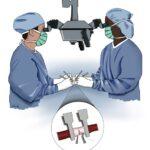Field hockey, a fast-paced and exhilarating sport, relies on the perfect synergy between the players and their equipment. At the heart of this dynamic relationship are two essential elements – the field hockey stick and the field hockey ball. In this blog, we’ll delve into the world of these critical tools, exploring their design, evolution, and the impact they have on the game.
Read all the important information about Field Hockey Stick and Field Hockey Ball
The Evolution of Field Hockey Sticks:
Field hockey sticks have come a long way from their humble beginnings. Initially, sticks were crafted from wood, providing players with a simple yet effective tool for striking the ball. However, with advancements in materials and technology, modern field hockey sticks have undergone a transformation. Today, players can choose from a variety of materials, including carbon, fiberglass, and aramid, each offering unique advantages in terms of flexibility, power, and control.
The Anatomy of a Field Hockey Stick:
Understanding the anatomy of a field hockey stick is crucial for players seeking the perfect match for their playing style. The stick comprises a handle, shaft, and head. The handle, often wrapped with a grip, allows players to maintain control during intense gameplay. The shaft determines the stick’s flexibility and power, with different bends catering to varied player preferences. Finally, the head, featuring a curved toe for ball control, comes in different shapes to suit the specific needs of players, whether they are forwards, midfielders, or defenders.
Choosing the Right Stick:
Selecting the right field hockey stick involves considering factors such as skill level, position, and personal preferences. Forwards may prefer a stick with a lower bow for enhanced dribbling and aerial skills, while defenders might opt for a higher bow for powerful clears and tackles. Additionally, the stick’s weight, balance, and composition play crucial roles in determining its overall performance.
The Dynamics of the Field Hockey Ball:
Equally important to the field hockey stick is the ball itself. The field hockey ball has evolved to meet the demands of the game, transitioning from leather to the current synthetic materials. The standard white ball is designed for visibility on the green field, but colored balls are used in certain conditions to enhance visibility.
Design and Construction:
The field hockey ball is typically made of hard plastic with a hollow core. Its shape and weight adhere to international regulations, ensuring a consistent playing experience. The ball’s surface is peppered with small dimples, contributing to its aerodynamic properties and ensuring smooth and accurate ball movement on the field.
Impact on Gameplay:
The interplay between the stick and the ball defines the essence of field hockey. The stick’s design influences a player’s ability to control, dribble, and strike the ball, while the ball’s construction affects its trajectory, bounce, and overall behavior on the field. The combination of a well-chosen stick and a quality ball is paramount for players aiming to excel in this dynamic sport.
Conclusion:
In the world of field hockey, the stick and the ball are inseparable partners, each contributing to the beauty and excitement of the game. As technology continues to advance, we can expect further innovations in the design and construction of these essential tools, pushing the boundaries of what is possible on the field. Whether you’re a seasoned player or a newcomer to the sport, understanding the intricacies of your field hockey stick and ball is the first step towards unlocking your full potential on the hockey field.



